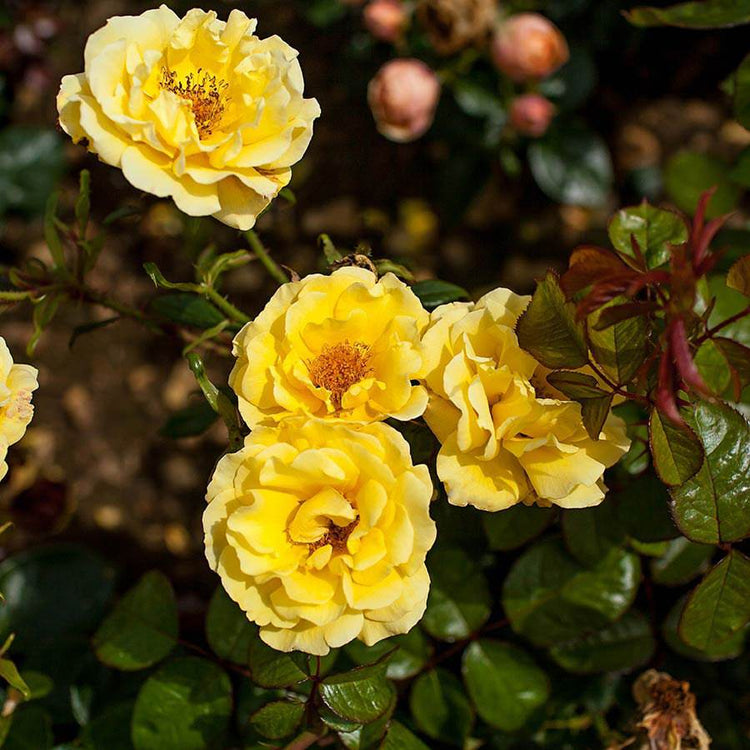Few flowers carry the timeless beauty and symbolism of the rose. From romantic red varieties to fragrant climbing roses, these blooms are a favorite in gardens across the United States, United Kingdom, and Canada. But here’s the secret: learning how to plant rose bushes is easier than many people think. With just a little care and planning, you can transform your outdoor space into a colorful, fragrant haven. Let’s uncover why everyone loves how to plant rose bushes and how you can do it successfully!Why Roses Are a Gardener’s FavoriteBefore we dive into the planting process, here’s why roses continue to steal the spotlight in gardens worldwide:🌹 Timeless beauty: Roses are elegant and versatile, perfect for borders, hedges, or centerpieces.🌹 Variety galore: From hybrid teas to floribundas, climbers to miniature roses—there’s a type for every garden.🌹 Long-lasting blooms: With the right care, roses can bloom from late spring through fall.🌹 Fragrance: Few plants rival the enchanting scent of roses.Choosing the Right Rose BushNot all roses are the same, so consider your climate, space, and desired look.Hybrid Tea Roses: Classic long-stemmed roses, ideal for cutting.Floribunda Roses: Clustered blooms for continuous color.Climbing Roses: Great for trellises, walls, or fences.Shrub Roses: Hardy and low-maintenance, perfect for borders.💡 Tip: In colder regions like Canada, look for hardy varieties such as rugosa or Canadian Explorer roses.Step-by-Step: How to Plant Rose BushesStep 1: Pick the Perfect LocationChoose a spot with 6–8 hours of sunlight daily.Ensure soil drains well—roses don’t like soggy roots.Step 2: Prepare the SoilDig a hole about 18 inches wide and deep.Mix compost or organic matter into the soil for nutrients.A slightly acidic pH (6.0–6.5) is ideal.Step 3: Planting the Rose BushIf planting bare-root roses, soak roots in water for 2–12 hours first.Place the plant in the hole, spreading roots evenly.Backfill with soil, making sure the graft union (the knobby part) is 2 inches below soil level in cold regions, and at soil level in warmer climates.Water thoroughly.Step 4: Mulch and WaterAdd 2–3 inches of mulch around the base to retain moisture and regulate soil temperature.Water deeply once or twice per week, depending on weather.Caring for Rose Bushes After PlantingPruning: Remove dead or weak stems each spring to encourage healthy growth.Feeding: Fertilize every 4–6 weeks during the growing season with rose-specific fertilizer.Pest Control: Watch for aphids, black spot, and powdery mildew—treat with organic sprays or insecticidal soap.Winter Protection: In cold climates, mound soil or mulch around the base for insulation.Why Everyone Loves Planting RosesAesthetic impact: Nothing elevates a garden like blooming roses.Symbolism: Roses represent love, beauty, and passion.Easy reward: With a few simple steps, you’ll enjoy years of stunning blooms.Universal appeal: Roses grow beautifully in small urban gardens, large estates, and even containers.Creative Ways to Use Rose BushesLine pathways with miniature roses for a charming border.Train climbing roses over an archway for a fairytale entrance.Mix shrub roses with perennials for a cottage garden look.Plant fragrant varieties near seating areas for natural aromatherapy.ConclusionIt’s no wonder everyone loves how to plant rose bushes—these timeless flowers are surprisingly easy to grow and endlessly rewarding. With the right location, soil preparation, and care, your roses will flourish year after year, adding beauty, fragrance, and charm to your garden.✨ So why wait? Discover the joy of planting your own rose bushes today and experience firsthand the magic they bring to any outdoor space!

